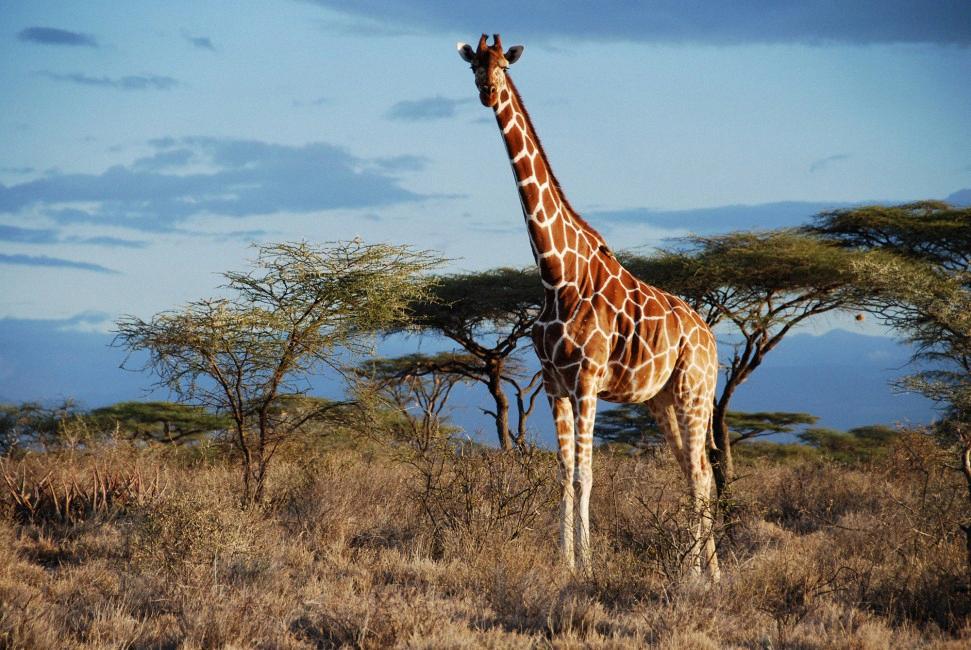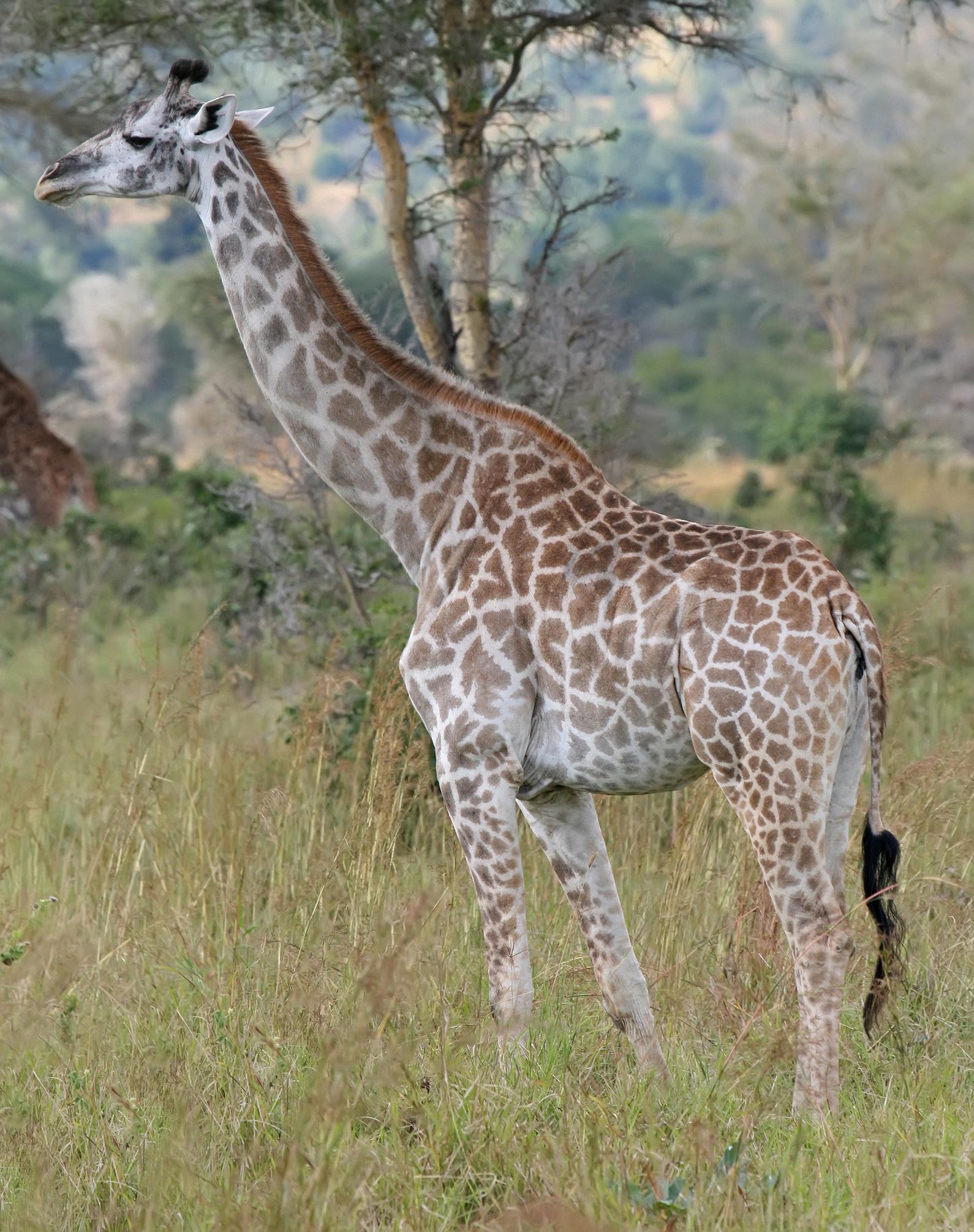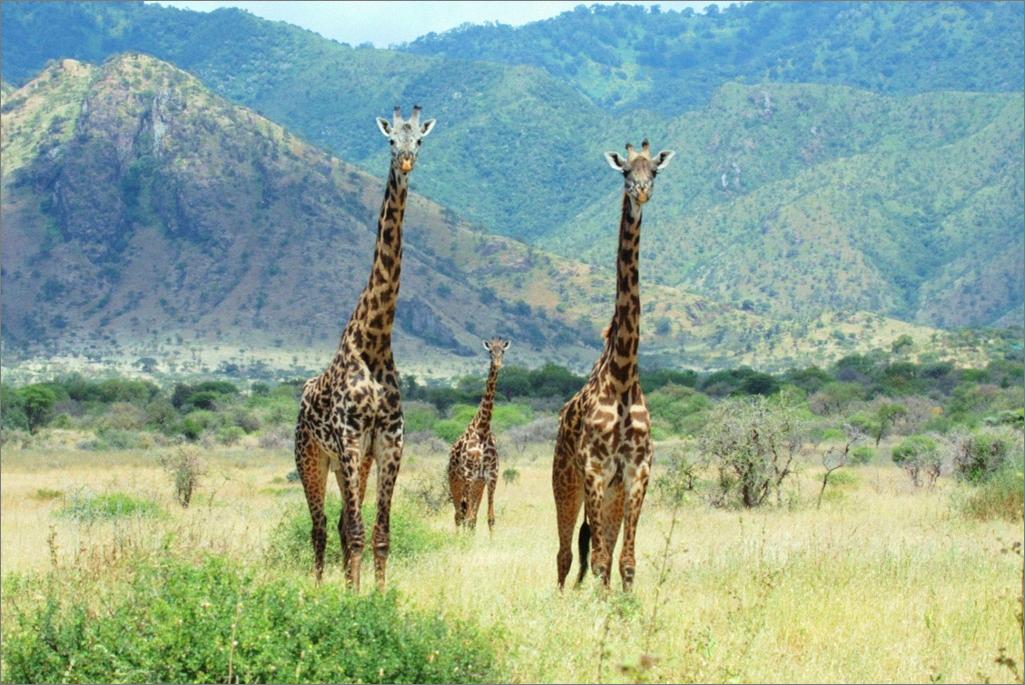Giraffes, the world’s tallest land animal, are truly magnificent creatures. With their long necks and legs, they are easily recognizable and beloved by many. However, these gentle giants are facing a crisis in the wild. In just 30 years, their population has declined by up to 40%, leaving only approximately 68,000 giraffes left in sub-Saharan Africa.
Giraffes are found in fragmented habitats scattered throughout the savannah and savannah woodlands of sub-Saharan Africa. They use both semi-arid and wooded areas for feeding, socializing, and breeding. Giraffes are herbivores, and their diet consists mainly of leaves, flowers, and fruits from trees and shrubs. Their long necks are not only an adaptation for feeding on high branches but also play a crucial role in communication and fighting for dominance.
Despite their size, giraffes are vulnerable to poaching and wildlife trafficking. In the past, giraffes were hunted for their skins, which were used to make shields and clothing. Nowadays, the main threats to giraffes are habitat loss, conflict with humans, and poaching for their meat and hides. Giraffes are easily killed, and their meat is considered a delicacy in some parts of Africa.
To protect giraffes in the wild, conservation efforts are underway. These include habitat restoration, anti-poaching patrols, and community engagement programs. Some countries have also implemented laws to ban the hunting and trade of giraffes and their products.
As individuals, we can also help protect giraffes in the wild. We can support conservation organizations that work to protect giraffes and their habitats, avoid buying giraffe products, and educate ourselves and others about the importance of protecting these gentle giants.
Giraffes are amazing animals that play a crucial role in their ecosystems. However, their population has declined dramatically in recent years, and they face numerous threats in the wild. We must work togeher to protect them and ensure their survival for future generations to enjoy.
Do Wild Giraffes Exist?
There are giraffes in the wild, but their numbers have significantly decreased in the past 30 years. According to recent estimates, there are only around 68,000 giraffes left in the wild. This decline in the giraffe population is alarming, with some reports suggesting that their numbers have decreased by up to 40%. The reasons for this decline are varied and include habitat loss, poaching, and climate change. Efforts are being made to conserve and protect the remaining giraffe populations through various initiatives, but more action is needed to ensure their survival in the wild.
Source: blog.wcs.org
Finding Giraffes in the Wild
Giraffes can be found in the wild scattered throughout sub-Saharan Africa, where they inhabit both semi-arid savannah and savannah woodlands. However, due to habitat fragmentation, their range is becoming increasingly limited. These majestic creatures require large areas of land to roam, and their habitat fragmentation is a cause for concern as it restricts their movement and access to resources. Therefore, it is essential to preserve their remaining habitats to ensure the survival of these iconic animals in the wild.
The Survival of Giraffes in the Wild
Giraffes do survive in the wild, but ther population has significantly declined over the past few decades due to various factors such as habitat loss, poaching, and wildlife trafficking. Giraffes are adapted to survive in the dry savannas and woodlands of Africa, where they feed on the leaves of trees and use their long necks to reach higher branches. They are social animals that live in herds, and their height and keen eyesight help them detect predators and potential threats. However, giraffes are vulnerable to hunting and poaching, which has led to a significant decline in their population. The International Union for Conservation of Nature (IUCN) lists giraffes as a “vulnerable” species, and various conservation efforts are underway to protect them and their habitat.
Are Wild Giraffes Found in America?
There are no wild giraffes in America as giraffes are native to the African continent. They are found in countries such as Kenya, Tanzania, and South Africa. Giraffes are known for their long necks and legs, which help them reach leaves high up in trees. They are also social animals that live in herds and communicate with each other through various vocalizations and body postures. While giraffes can be found in zoos and wildlife parks throughout America, they are not naturally occurring in the wild in the United States.
Do Wild Giraffes Sleep Standing Up?
Giraffes do sleep standing up in the wild. In fact, they have the ability to sleep both standing up and lying down. However, they tend to sleep standing up more frequently because it allows them to be more aware of their surroundings and potential predators. Giraffes have a unique sleep cycle compared to other animals, where they have multiple short sleep cycles throughout the day that last aout 35 minutes each. During these sleep cycles, giraffes can rest their heads on their rumps or necks and even keep one eye open for any potential threats. Despite their ability to sleep standing up, giraffes will also lie down to rest for longer periods of time, especially during the night when they feel more secure.
Source: en.wikipedia.org
Aggression in Wild Giraffes
Giraffes, the tallest mammals on earth, are generally not considered to be aggressive animals. They are known for their gentle and calm demeanor, and their peaceful nature in the wild. However, it is important to note that female giraffes can become aggressive when they feel their calves are in danger or threatened. This is a natural instinct for mothers in the animal kingdom, and it is important to give them space and respect dring these times. while giraffes are not typically aggressive animals, it is always important to be aware of their behavior and give them the space they need to feel safe and comfortable in their natural habitat.
Comparing the Strength of a Giraffe and a Lion in a Fight
When it comes to a fight between a lion and a giraffe, it is important to consier the physical attributes of both animals. While a lion is a fierce predator with powerful jaws and sharp claws, a giraffe’s height and size give it a significant advantage in a fight.
Giraffes are the tallest land animals, standing up to 18 feet tall, and they can weigh up to 3,000 pounds. This size and height make it difficult for a lion to attack a giraffe’s vulnerable areas, such as its throat, which is its typical strategy when tackling large prey. Additionally, a giraffe’s powerful legs can deliver a lethal kick that can seriously injure or even kill a lion.
On the other hand, lions are known for their agility and strength, and they are experienced hunters who are skilled at taking down prey much larger than themselves. They have sharp teeth and claws that allow them to deliver quick and lethal attacks.
Despite the lion’s hunting prowess, the giraffe’s size and height make it unlikely that a lion would be successful in a fight between the two. In the wild, lions typically avoid attacking giraffes, focusing instead on smaller and more vulnerable prey. while a lion may be a formidable predator, in a fight against a giraffe, the odds would be heavily stacked in favor of the giraffe.
Seeing Giraffes in America
If you’re looking to see giraffes in America, one great place to visit is Giraffe Ranch, located in Dade City, Florida. Here, you’ll have the opportunity to experience these majestic creatures up close and personal, as well as other species from around the world, all living in a setting that resembles the grasslands of Africa. The ranch is home to a variety of giraffes, including reticulated, Masai, and hybrid breeds, all living under large live oak trees and open grasslands. In addition to giraffes, you’ll also have the chance to see other exotic animals such as zebras, ostriches, and kudu, all roaming freely in ther natural habitat. With a knowledgeable staff and a variety of educational programs, Giraffe Ranch offers a unique and unforgettable experience for animal lovers of all ages.
Where Do Giraffes Live?
Giraffes are not native to the United States, and therefore, they do not live in any of the states in the country. These majestic animals are endemic to the African continent and are primarily found in grasslands and open woodlands of East Africa, epecially in reserves such as Serengeti National Park and Amboseli National Park. In Southern Africa, they can also be found in reserves such as Kruger National Park and Kgalagadi Transfrontier Park. While giraffes are not found in the United States, many zoos and wildlife parks across the country have giraffes as part of their wildlife exhibits, providing visitors with the opportunity to learn about these fascinating creatures up close.
Source: adoptananimalkits.com
Do Giraffes Enjoy Being Petted?
Generally speaking, giraffes do not like being pet or touched by humans. They are wild animals and have a natural instinct to protect themselves from potential threats, which can include humans. Additionally, their skin is very sensitive and can easily be injured or irritated by human touch. However, some giraffes may tolerate being touched if they are familiar with humans and have been trained to do so. Nevertheless, it is always important to exercise caution and respect when interacting with giraffes or any other wild animal in their natural habitat.
Do Lions Prey on Giraffes in the Wild?
Lions do eat giraffes in the wild. Giraffes are a preferred prey for lions because they are large and provide a lot of meat. Lions typically hunt giraffe calves, as they are easier to catch and kill than adult giraffes. However, lions will also hunt and kill adult giraffes when the opportunity arises. It’s important to note that giraffes are not the primary prey for lions, but they are still a significant part of their diet. In fact, some studies suggest that lion predation may be the leading cause of death for giraffe calves. wile lions don’t exclusively eat giraffes, they are certainly a part of the food chain in the wild.
The Number of Hearts in a Giraffe
Giraffes have three hearts. The first is the systemic heart, which is the main heart and pumps blood throughout the body. The second and third hearts are located in the neck and are known as the lesser hearts. These two hearts work together to pump blood to the gills where waste is discarded and oxygen is received. The unique cardiovascular system of the giraffe allows it to maintain proper blood pressure despite its long neck and tall stature. In addition to hving multiple hearts, giraffes are also known for being the world’s tallest mammals, with adult males reaching heights of up to 18 feet.
The Intelligence of Giraffes
Giraffes are considered to be quite intelligent animals. They are able to adapt quickly to changing external stimuli and have been observed exhibiting problem-solving skills in the wild. Giraffes are also known to have excellent eyesight, which allows them to detect predators from a great distance. Additionally, research has shown that giraffes have complex social behaviors and communication methods, such as vocalizations and body language. while it is difficult to quantify intelligence in animals, it is clear that giraffes possess a range of cognitive abilities that contribute to their success in the wild.
Source: blog.cincinnatizoo.org
Estimated Number of Wild Giraffes Remaining
According to the latest estimates by the Giraffe Conservation Foundation (GCF) and the International Union for Conservation of Nature (IUCN) Red List, the current Africa-wide giraffe population is approximately 117,000 individuals. This is a significant decline from the 1980s when the total number of all giraffes in Africa was estimated to be more than 155,000 individuals. These numbers indicate that giraffes are facing significant threats in the wild, and conservation efforts need to be intensified to ensure their survival. The West African giraffe, in particular, is classified as vulnerable, highlighting the urgent need for targeted conservation efforts to protect this species.
Evolution of Giraffes
According to some scientists, it is believed that today’s giraffe, scientifically known as Giraffa camelopardalis, evolved from an animal that resembled its close relative, the okapi. The okapi, scientifically known as Okapia johnstoni, is a forest-dwelling mammal found in the central African rainforests. Giraffes, on the other hand, are found in sub-Saharan Africa and are known for their long necks and distinctive spotted coat patterns. While there is ongoing research and debate on the exact evolutionary history of giraffes, many scientists belive that the okapi and giraffe share a common ancestor and that their physical differences evolved as they adapted to different environments over time.
Conclusion
The giraffe population in the wild has drastically declined by up to 40% in the past three decades, with an estimated 68,000 individuals remaining. This decline is mainy attributed to habitat loss, poaching, and wildlife trafficking. Giraffes are found in fragmented habitats scattered throughout sub-Saharan Africa, where they use both semi-arid savannah and savannah woodlands. Despite being the world’s tallest land animal, giraffes are easily killed, and poaching for their meat and hide continues to threaten their survival. Therefore, it is crucial to take action to protect giraffes and their habitats to ensure their survival and prevent their extinction. This can be achieved through increased awareness, conservation efforts, and stronger laws and regulations to combat poaching and illegal wildlife trade.




